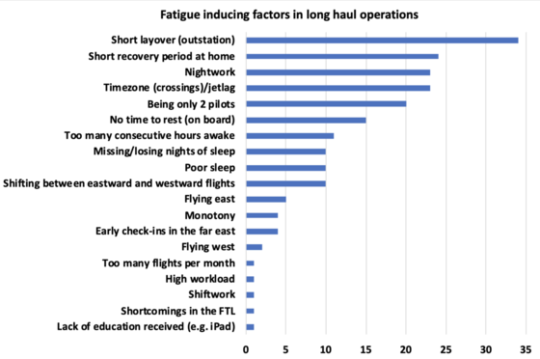
FRM News Flash – January 2020
Aeromexico Selects Jeppesen Crew Tracking

Aeromexico, Mexico’s global airline, a recent recipient of a five-star rating by APEX for outstanding passenger service, have chosen Jeppesen Crew Tracking (JCT) for their crew management process.
“We selected Jeppesen Crew Tracking for gaining improved control and recoverability in day of operation”, says Juan Nicolás Rhoads, VP Crew Planning at Aeromexico. “Excellent and reliable decision support is key for us in this part of the process in order to always offer the best service to our passengers, and JCT, with its details-on-demand and management-by-exception concepts will now become the centerpiece for us managing operational disruptions going forward”, he continues.
Fernando Leiva, Sales Director at Jeppesen adds: “We are honored to be chosen by Aeromexico once again and are immensely proud over this long-standing relationship where we team up to elevate crew management best practices.”
Jeppesen Crew Tracking is a modern state-of-the art crew solution, enabling operators to quickly and pro-actively take optimal decisions for preventing and resolving day of operation crew disruptions. Aeromexico will have FRM functionality (BAM) tightly integrated with their solution. Please read more here about JCTand BAM.
Providing for Crew Influence, Embracing Diversity

Not only are we all somewhat different in terms of how we sleep and recover, but we may also have different family situations, hobbies, commute times, etc. affecting our needs outside of working hours. For these reasons, it is wise for operators to provide crew with influence over their rosters in terms of both work-content and distribution of spare time. Most operators have mechanisms in place for allowing crew to influence their rosters – but there are many different ways of doing so. We interviewed Lars Söderqvist, product manager for the Jeppesen Crew Rostering product, to learn a bit more about the different concepts in use.
 What are the most common approaches for allowing crew to influence their rosters?
What are the most common approaches for allowing crew to influence their rosters?
– The most basic ones are of course providing for different work contracts such as part-time contracts, but also movement between short-haul, long-haul and cargo operation, which are all typically quite different in nature. Looking instead at short-term influence of rosters for the coming weeks, the simplest concept is to promise crew certain production, or time off, based on a priority order that may be seniority, first-come-first served, or a combination. These ‘requests’ are then pre-assigned to the rosters before the optimization process, which will then try to cover all remaining production on the free time still available for the crew. This approach typically results in either an overall low level of crew influence, or the operator experiencing problems in covering all production, since too much has been ‘given away’. On the other hand, it is a very transparent process for the crew.
So what other options exists?
– Two common concepts for preferential bidding are ‘fair share’, and ‘strict seniority’. Strict seniority is the dominating concept in North America and is based on crew picking their desired production in seniority order – meaning that junior crew typically end up with an unattractive part of the production, such as receiving low pay for many hours of work and time away from base. The ‘fair share’ concept, common in Europe for example, is normally based on crew placing ‘bid points’ to express the ‘desirability’ of having their different bids granted, and the optimizer then striving to bring everyone up to a similar ‘bid ratio’; a ratio calculated for each crew as their granted bid points divided by the maximum bid points achievable.
– But there are plenty of hybrid solutions where bids and requests co-exist, and the prioritization for granting them may be based on both seniority and expressed ‘desirability’. Another type of crew influence is also present after roster publication, referrred to as ‘trip trading’ where crew swap production with each other.
Can you give some examples of what crew may ask for?
– Bids could be placed for certain flights or trips, and all properties of those, such as ‘starting after 10am’, minimum credit time, or asking for one-day trips. Other examples are time-off bids and and flying together – so called ‘buddy bids’. An interesting and increasingly popular concept now is ‘lifestyle bids’ with pre-cooked properties identified as suitable for commuters, crew with smaller children, morning people etc., making bidding easy and relevant. The idea behind all concepts is to provide maximum crew influence while protecting the operator’s ability to efficiently cover all production. You can find more information about our solutions in this area on our web site here.
Lars Söderqvist is the Product Manager for the Jeppesen Crew Rostering product working in Gothenburg, Sweden. Lars first engaged in crew management and optimization in the late nineties and has since supported a large number of operators world-wide with implementing advanced solutions for the crew rostering process. In his spare time Lars performs in the Vocal Art Ensemble of Sweden, a choir appreciated for its commitment to contemporary music.
Nine Different Types of Naps
The benefit of a good nap can be substantial. Even just a shorter nap has the potential to: 
- Boost your brain function, including focus, accuracy, and concentration
- Enhance your creativity
- Improve your critical thinking skills
- Lower your stress levels and lift your mood
- Give you more energy and improve your physical performance
This article in Psychology Today will inform you further about nine different type of naps, such as the CEO nap, the Siesta nap, the Sports nap, and the Shift work nap. Follow your dream – take a nap?
Project CHARLES Report Published
 The final report on project CHARLES by the Stress Research Intitute, Stockholm University, which investigates the effects of the new EASA FTL on pilot sleep and fatigue, was just recently published on their website.
The final report on project CHARLES by the Stress Research Intitute, Stockholm University, which investigates the effects of the new EASA FTL on pilot sleep and fatigue, was just recently published on their website.
The project used both an extensive web survey, answered by some 360 pilots, and a field study collecting data covering some 400 days of diary data. Among other findings, about one fifth of all working days were found to be associated with sleepiness up to a level that crew felt countermeasures were appropriate.
Please find the report through this link.
Best Practice Control of Fatigue Risk

Roster-induced fatigue risk may originate from the flight schedule itself, and then elevated further in the pairing construction. The risk could increase even more in the crew rostering process, then again in the re-disposition of work done during the roster maintenance phase, and finally of course be elevated even further by late roster changes at day-of-operation. Controlling crew fatigue risk, throughout the often quite complex crew management process, means keeping an eye on all of these process steps and then improving where you get the best return on your investment. It requires a fair amount of insights, good metrics, patience, grit and of course capable tools.
Jeppesen has compiled a document that attempts to capture and describe a best-practice for controlling crew fatigue, throughout the full crew management process. Please access it here through this link. Hopefully you find it useful in your own work when striving to contain and reduce your roster-induced fatigue risk. Enjoy.
Meet Up with the Jeppesen Experts
FEB 25-26: FRM Training Course, Gothenburg
MAR 16-19: Managing Fatigue 2020, Fremantle
MAR 31-APR 1: Flight Operational Forum Norway, Oslo
APR 20-22: AGIFORS, Istanbul
MAY 12-13: FRM Training Course, Montreal
jeppesen.com/frm
+46 31 720 81 00
Send us an Email
Aeromexico Selects Jeppesen Crew Tracking

Aeromexico, Mexico’s global airline, a recent recipient of a five-star rating by APEX for outstanding passenger service, have chosen Jeppesen Crew Tracking (JCT) for their crew management process.
“We selected Jeppesen Crew Tracking for gaining improved control and recoverability in day of operation”, says Juan Nicolás Rhoads, VP Crew Planning at Aeromexico. “Excellent and reliable decision support is key for us in this part of the process in order to always offer the best service to our passengers, and JCT, with its details-on-demand and management-by-exception concepts will now become the centerpiece for us managing operational disruptions going forward”, he continues.
Fernando Leiva, Sales Director at Jeppesen adds: “We are honored to be chosen by Aeromexico once again and are immensely proud over this long-standing relationship where we team up to elevate crew management best practices.”
Jeppesen Crew Tracking is a modern state-of-the art crew solution, enabling operators to quickly and pro-actively take optimal decisions for preventing and resolving day of operation crew disruptions. Aeromexico will have FRM functionality (BAM) tightly integrated with their solution. Please read more here about JCTand BAM.
Providing for Crew Influence, Embracing Diversity

Not only are we all somewhat different in terms of how we sleep and recover, but we may also have different family situations, hobbies, commute times, etc. affecting our needs outside of working hours. For these reasons, it is wise for operators to provide crew with influence over their rosters in terms of both work-content and distribution of spare time. Most operators have mechanisms in place for allowing crew to influence their rosters – but there are many different ways of doing so. We interviewed Lars Söderqvist, product manager for the Jeppesen Crew Rostering product, to learn a bit more about the different concepts in use.
 What are the most common approaches for allowing crew to influence their rosters?
What are the most common approaches for allowing crew to influence their rosters?
– The most basic ones are of course providing for different work contracts such as part-time contracts, but also movement between short-haul, long-haul and cargo operation, which are all typically quite different in nature. Looking instead at short-term influence of rosters for the coming weeks, the simplest concept is to promise crew certain production, or time off, based on a priority order that may be seniority, first-come-first served, or a combination. These ‘requests’ are then pre-assigned to the rosters before the optimization process, which will then try to cover all remaining production on the free time still available for the crew. This approach typically results in either an overall low level of crew influence, or the operator experiencing problems in covering all production, since too much has been ‘given away’. On the other hand, it is a very transparent process for the crew.
So what other options exists?
– Two common concepts for preferential bidding are ‘fair share’, and ‘strict seniority’. Strict seniority is the dominating concept in North America and is based on crew picking their desired production in seniority order – meaning that junior crew typically end up with an unattractive part of the production, such as receiving low pay for many hours of work and time away from base. The ‘fair share’ concept, common in Europe for example, is normally based on crew placing ‘bid points’ to express the ‘desirability’ of having their different bids granted, and the optimizer then striving to bring everyone up to a similar ‘bid ratio’; a ratio calculated for each crew as their granted bid points divided by the maximum bid points achievable.
– But there are plenty of hybrid solutions where bids and requests co-exist, and the prioritization for granting them may be based on both seniority and expressed ‘desirability’. Another type of crew influence is also present after roster publication, referrred to as ‘trip trading’ where crew swap production with each other.
Can you give some examples of what crew may ask for?
– Bids could be placed for certain flights or trips, and all properties of those, such as ‘starting after 10am’, minimum credit time, or asking for one-day trips. Other examples are time-off bids and and flying together – so called ‘buddy bids’. An interesting and increasingly popular concept now is ‘lifestyle bids’ with pre-cooked properties identified as suitable for commuters, crew with smaller children, morning people etc., making bidding easy and relevant. The idea behind all concepts is to provide maximum crew influence while protecting the operator’s ability to efficiently cover all production. You can find more information about our solutions in this area on our web site here.
Lars Söderqvist is the Product Manager for the Jeppesen Crew Rostering product working in Gothenburg, Sweden. Lars first engaged in crew management and optimization in the late nineties and has since supported a large number of operators world-wide with implementing advanced solutions for the crew rostering process. In his spare time Lars performs in the Vocal Art Ensemble of Sweden, a choir appreciated for its commitment to contemporary music.
Nine Different Types of Naps
The benefit of a good nap can be substantial. Even just a shorter nap has the potential to: 
- Boost your brain function, including focus, accuracy, and concentration
- Enhance your creativity
- Improve your critical thinking skills
- Lower your stress levels and lift your mood
- Give you more energy and improve your physical performance
This article in Psychology Today will inform you further about nine different type of naps, such as the CEO nap, the Siesta nap, the Sports nap, and the Shift work nap. Follow your dream – take a nap?
Project CHARLES Report Published
 The final report on project CHARLES by the Stress Research Intitute, Stockholm University, which investigates the effects of the new EASA FTL on pilot sleep and fatigue, was just recently published on their website.
The final report on project CHARLES by the Stress Research Intitute, Stockholm University, which investigates the effects of the new EASA FTL on pilot sleep and fatigue, was just recently published on their website.
The project used both an extensive web survey, answered by some 360 pilots, and a field study collecting data covering some 400 days of diary data. Among other findings, about one fifth of all working days were found to be associated with sleepiness up to a level that crew felt countermeasures were appropriate.
Please find the report through this link.
Best Practice Control of Fatigue Risk

Roster-induced fatigue risk may originate from the flight schedule itself, and then elevated further in the pairing construction. The risk could increase even more in the crew rostering process, then again in the re-disposition of work done during the roster maintenance phase, and finally of course be elevated even further by late roster changes at day-of-operation. Controlling crew fatigue risk, throughout the often quite complex crew management process, means keeping an eye on all of these process steps and then improving where you get the best return on your investment. It requires a fair amount of insights, good metrics, patience, grit and of course capable tools.
Jeppesen has compiled a document that attempts to capture and describe a best-practice for controlling crew fatigue, throughout the full crew management process. Please access it here through this link. Hopefully you find it useful in your own work when striving to contain and reduce your roster-induced fatigue risk. Enjoy.
Meet Up with the Jeppesen Experts
| FEB 25-26: FRM Training Course, Gothenburg
MAR 16-19: Managing Fatigue 2020, Fremantle MAR 31-APR 1: Flight Operational Forum Norway, Oslo APR 20-22: AGIFORS, Istanbul MAY 12-13: FRM Training Course, Montreal |
| jeppesen.com/frm | +46 31 720 81 00 | Send us an Email |
